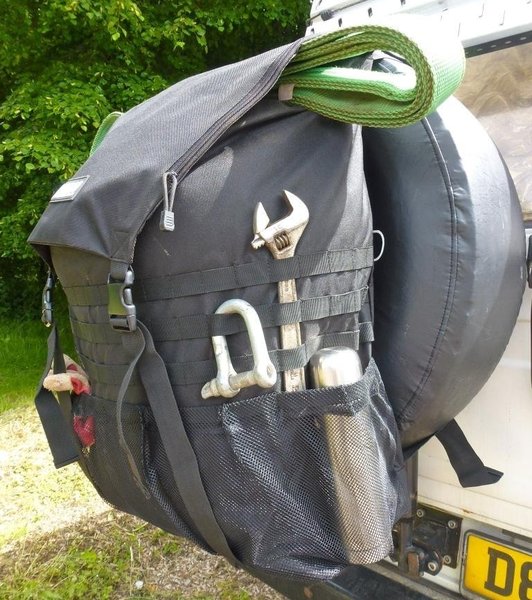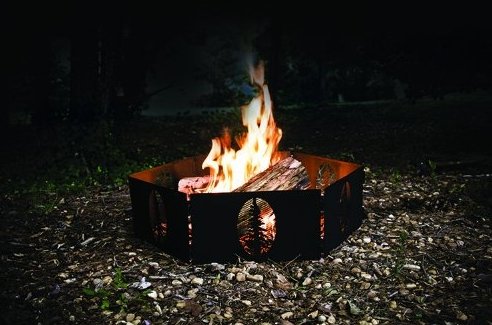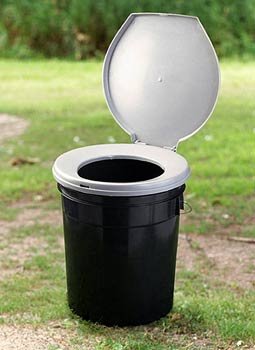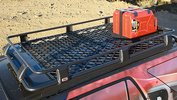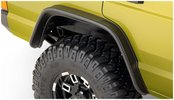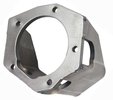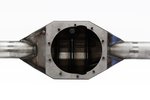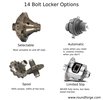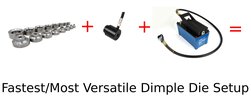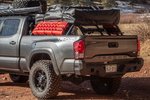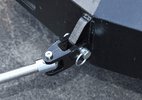6 Simple Ways to Have Trails to Ride (in the Next 10 Years)
We know what it's like. You just want to go trail riding, but all you hear about is this trail access BS.
But think:
What happens 10 years from now?
We can promise you that the actions of all of us fourwheelers and OHVers will directly influence whether our trails and OHV recreation areas are open in the future. There are a few bad apples doing bad things, and too many apples doing nothing.
In this article we'll look at some small changes you can make that'll make the trails better and improve the public perception of us 4x4 adventurers.
1. Don't be a Drive-By-er.
This bag trash does double duty: it takes 30 gallon liners on the inside and has Molle loops on the outside.
It's amazing how much trash we still see on 4x4 trails. While some of it is surely wrappers that blow out of open Jeeps or windows, there are clearly some people that just don't care about tossing trash out anywhere.
This is bad for us.
But those a-holes aren't the only problem:
It's also all the people that just drive by without picking anything up - maybe you?
If you want our trails to get shut down (it happens all the time), then leave trash where it is. It'll show environmentalists just how little we care.
Realizing that we were part of the problem if we were "Drive-By-ers", we decided to carry a trash bag and pick up at least one piece of trash on every 4x4 outing. Sometimes we pick up a little trash and sometimes we pick up a lot (like tires and TVs).
Look, this probably sounds a little preachy.
But there's one thing we can guarantee:
You'll feel good as soon as you drop that piece of trail trash into a trash bag.
Some areas are just going to keep getting trashed. You can't stop that, but you always have the ability to do something when you see trash on the trail.
2. Stop being a trail-making dork.
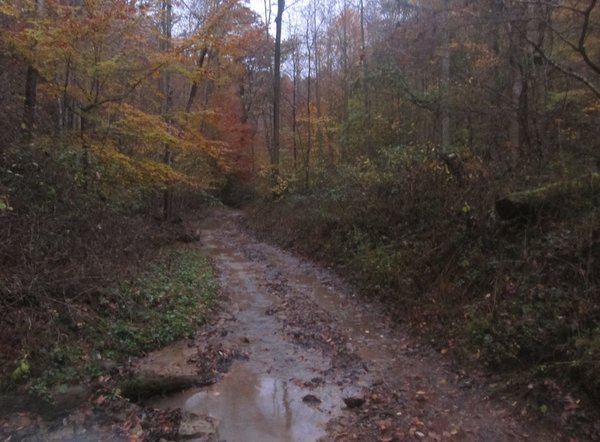
Nothing ruins the feeling that you're on an adventure more than seeing a hundred trails crisscrossing and paralleling the main trail from drivers that we not well-equipped or skilled enough to get through an obstacle.
Now:
We're not talking about a bypass or two around a major obstacle. We recognize that some established, enjoyable trails have major obstacles that have been made more difficult by continual use.
We are talking about places that look like they've become a ripped-up 4x4 playground. This is the place everyone thinks they are entitled to go, whether they're on stock tires or 44s, whether they've got the driving ability or not.
Can't make it down the trail? "No problem, I'll just make a new one."
Don't be that guy.
Make things better by:
- Avoiding bypasses: Some things aren't as bad as they look (like water-filled holes that have hard bottoms).
- Having a properly equipped rig: Air down, use your lockers, have the right tires, and be ready with your winch.
- Turning around when you've reached the limit of your skills: Just as a high school junior shouldn't be playing in the NFL, a 4x4 owner should know when to turn back. You gotta build your skills up. This also tends to save you from broken parts and spending the night in your truck.
3. Make fewer fires.
This makes having a safe fire easy: set it up and you can contain sparks and coals from spreading outside the fire zone.
As die-hard fire-makers, this was a tough one for us. But times, they are a-changing.
Whether you believe in climate change or not, wildfires are getting worse. Fire bans are becoming more common and last longer than in the previous decade. It's not likely to improve for the next few years.
What's the most important thing you can do?
Check if a fire ban is in effect in your wheeling area and, if so, don't have a fire. This probably sounds dumb, but people are still ignoring fire bans and causing fires that kill people and destroy homes and businesses.
Decrease the chances that you'll cause the next town-burning, mud-slide-causing fire by:
- Not having fires.
- Keeping your catalytic converter clear of brush and debris that can ignite. Cats do get hot enough to ignite things like dry grasses.
- Putting out cigarettes completely.
- Using electric lanterns.
- Not having fireworks.
If you are in an area that allows fires, remember that you're 100% responsible for it.
Keep your fire safe:
- Clear the area around the fire of flammable leaves, twigs, and other debris.
- Keep it contained in a fire ring.
- Use wood no larger than your wrist. This makes it easy to cut and easy to burn.
- Make it small.
- Burn everything in your fire ring completely - don't leave leftover charred logs.
- Put it out completely. A bucket or small water jug full of water works great.
4. Pack out your poop.
This bucket toilet is super cheap, super easy to use, and makes it easy to pack your waste out.
Everybody poops.
But that doesn't mean that you need to go in the woods and let everyone know that you poop by leaving your own precious pile adorned with toilet paper that will blow everywhere once the wind picks up.
Here's the deal:
Used toilet paper and poop are gross. We know. But we fourwheelers need a better strategy than leaving it all over the place. Human waste is a serious issue on 4x4 trails and has even caused trails to shut down.
What can you do differently?
In some places, you can bury human waste. Use a shovel or small, discrete trowel and put your crap underground. Stay 200 feet away from streams.
If you're in a rocky or sandy area or an area where lots of water will dump into a large body of water (i.e. a vulnerable watershed), pack it out.
Say what?!?
Rocky areas often have no place to dig and even if you can bury there's a high probability that your waste will wash away. Sandy and rocky areas both lack microorganisms that can break down human waste and toilet paper.
But it's easy to pack it out.
Use a bucket to poop into a bag. Take the bag out when you're done and put that in another bag. You can store these bags in a hard plastic Rubbermaid container and throw it away when you get home. This will prevent the landscape from being dotted with feces when thousands of off roaders need to poop.
5. Change the way you travel.
Look:
We know that some of the fun of being off road may come from bombing down trails and flying through mudholes. But maybe you can do it a little less sometimes - what do you want your trails to look like in 10 years?
It's possible to have a huge truck and still be conscientious on the trail. You just need to adjust your driving style.
Here's how:
- Decrease wheel spin: Use lockers, air down, and get out the winch when you know you're stuck. Too many people wait to long to ask for the strap. They let their tires dig down and that isn't good for anyone. Ruts increase erosion and make it harder for the next 4x4, which causes worse ruts and trail bypasses.
- Straddle ruts and washouts where possible: This is often just good practice anyway, but it also prevents the rut or washout from getting deeper, which can cause more erosion.
- Scout ahead: We've found it helpful to scout the trail and find out where we want to plant our Swampers. You can find out how deep holes are, probe for mud or a solid bottom, and think a few moves ahead: "If I get stuck here, I'll use that tree as a winch anchor."
We've also been thinking a lot lately about trail weight of our rigs.
Here's why:
Heavy rigs do everything worse than light rigs:
- They get stuck more easily.
- They need heavier recovery gear to get unstuck.
- They break more easily.
- They have worse fuel mileage.
- They usually require more space to maneuver.
We decided to start making efforts to thin out tools, spares, and gear that don't get used a lot. Another benefit should be slightly easier wheeling with less trail damage.
The Zero Wheelspin Game
While wheelspin isn't avoidable, you probably spin your tires more than you need to. Practice running trails with as little wheelspin as possible. Frankly, we think there too many people running trails that think the only way to get down the trail is by mashing the skinny pedal.
But a zero-wheelspin run requires skill and spatial knowledge of your vehicle:
- Do you know exactly where your tires are?
- Can you predict weight shifts?
- Can you be quick and efficient?
6. Skip the Starbucks and do something good with that cash.
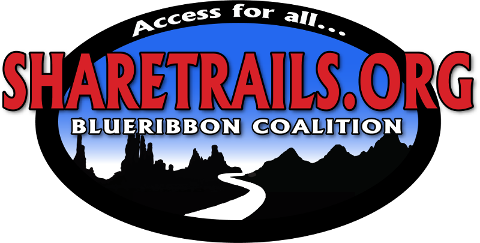
There are people and organizations out there that have been fighting for our trail rights for decades. They recognize that our actions on the trail, good and bad, have a direct effect on trail access and the public's perception of OHV users. Two of the largest are Tread Lightly and the Blueribbon Coalition. Memberships are pretty inexpensive and you'll be doing your part to support our trails.

Additionally, there are many local, statewide, and regional fourwheeling clubs and associations that also do trail advocacy, maintenance, education, and cleanups.
If you join, you might even make some new friends!
Last updated: June 3, 2019
